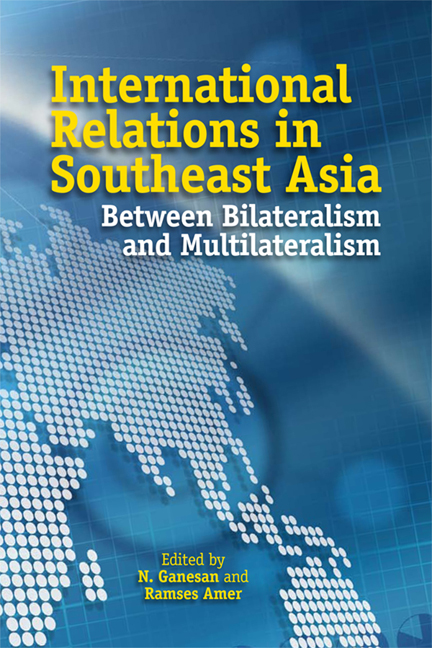12 - Conclusion
from Conclusion
Published online by Cambridge University Press: 18 November 2017
Summary
This conclusion summarizes the book's main findings. This will be followed by a broader discussion on the relationship between multilateralism and bilateralism in the Southeast Asian context. The broader discussion will also specifically link Etel Solingen's theory chapter at the start of the book to the country studies. This linkage will assist in placing the case studies within a broader context as well as bring the book full circle. The conclusion also addresses the importance of key factors influencing the bilateral relationships in the Southeast Asian region and their impact on regional collaboration and ASEAN.
Main Findings
Etel Solingen's chapter makes it clear that there are many different forms of international cooperation with different meanings attached to them. She then goes on to identify seven different core concepts in the international relations literature dealing with the subject. The term multilateralism itself became a focus of analysis in the 1990s. Central to the concept of multilateralism is a set of protocols demanding that states forego some of their own narrow interests in order to achieve general organizing principles in relationships characterized by diffuse reciprocity. Different schools of thought such as neorealism, neoliberal institutionalism, and constructivism employ different approaches to the study of multilateralism that in turn highlight different core variables and constraints. Solingen thinks that a convergence of domestic coalitional strategies among dominant actors favouring internationalization provides a powerful incentive for multilateralism, and it was such convergence that spurred ASEAN. There was a synergy between economic and security interests in ASEAN. Nonetheless, states like Indonesia, the Philippines, and Singapore tended to favour bilateral cooperation with external countries on security matters despite their common fears. Dominant internationalizing coalitions favour any arrangements, multilateral or otherwise, that promise both domestic political and macroeconomic, as well as regional, stability; these, in turn, enhance attractiveness to foreign investment and access to global markets, technology, and capital required for sustained economic growth and domestic political survival.
- Type
- Chapter
- Information
- International Relations in Southeast AsiaBetween Bilateralism and Multilateralism, pp. 313 - 337Publisher: ISEAS–Yusof Ishak InstitutePrint publication year: 2010

